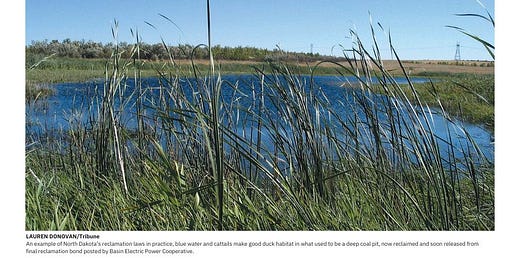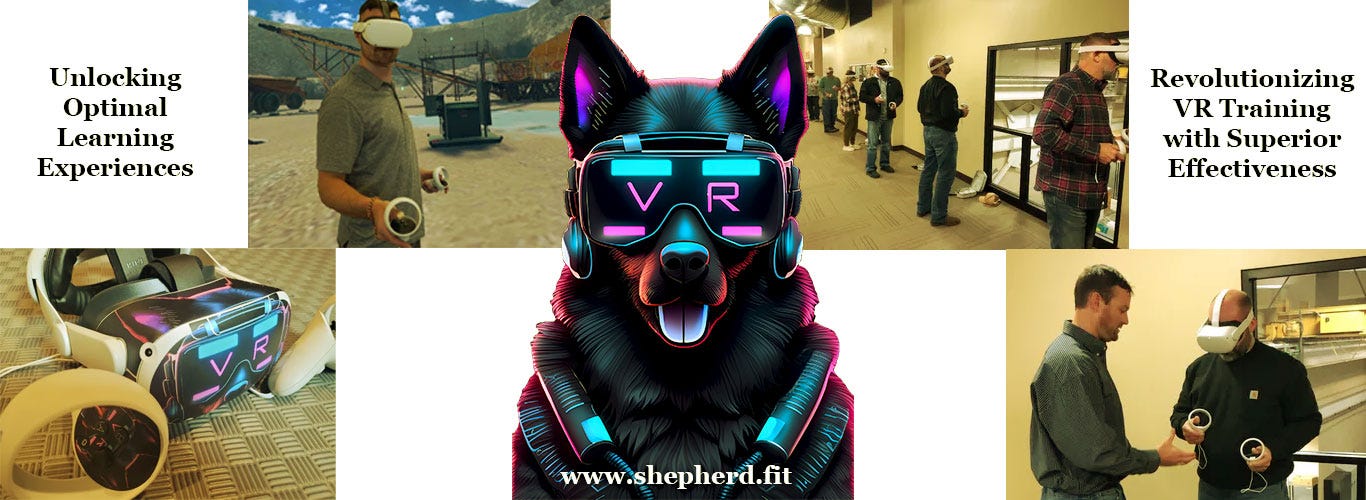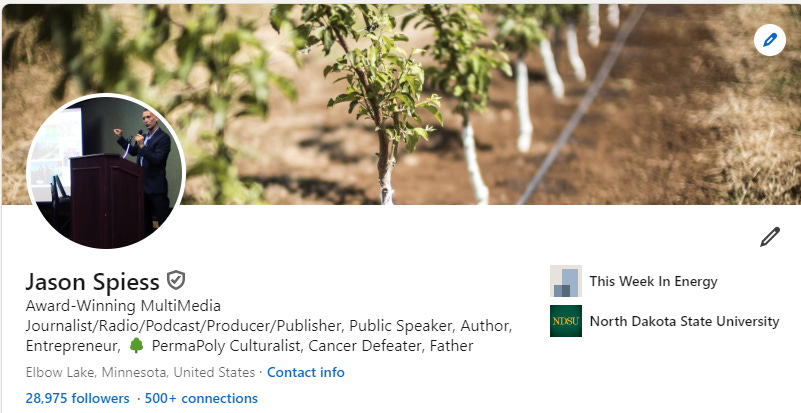Healing the Land: How Remediation and Reclamation is Reshaping the Industry
Today, major companies like Chevron, ExxonMobil, and Shell — along with hundreds of specialized service firms — are heavily investing in cleaning up the land post-production.
In the rugged corners of North Dakota, the sun sets over rolling prairies where pumpjacks once nodded to the rhythm of extraction. Today, in many of those places, a surprising sight has emerged: native grasses, thriving wetlands, and even flourishing habitats for wildlife. It's a symbol of a quiet revolution underway in the oil and gas industry — a powerful investment into land remediation, reclamation, and environmental regeneration that is reshaping not only landscapes but also the industry's relationship with the environment.
This is more than optics or obligatory compliance. A growing sector within oil and gas is proving that remediation and reclamation can drive profitability, create meaningful jobs, support local economies, and lay the groundwork for a circular, regenerative approach to industrial activity.
From Extraction to Restoration
For most of the 20th century, oil and gas development was a forward-only enterprise. Wells were drilled, resources extracted, and once reserves dwindled, sites were often abandoned or left minimally restored. But tightening environmental regulations, heightened public scrutiny, and a changing corporate ethos in the 21st century have flipped that model.
Today, major companies like Chevron, ExxonMobil, and Shell — along with hundreds of specialized service firms — are heavily investing in cleaning up the land post-production. Reclamation means returning disturbed land to its original or beneficial condition after drilling activities. Remediation involves removing contaminants from soil, water, and ecosystems, sometimes making the land even more fertile and resilient than before.
The transformation is not just happening in traditional oilfields. Shale plays, offshore platforms, and pipeline corridors are all seeing environmental reclamation efforts that integrate science, technology, and collaboration with local communities.
Numbers That Tell the Story
According to a 2024 report from the Interstate Oil and Gas Compact Commission (IOGCC):
Over $8.4 billion was invested in land remediation and reclamation activities in North America between 2018 and 2024.
More than 100,000 jobs have been created directly through reclamation and remediation efforts — from environmental scientists and engineers to heavy equipment operators and native seed harvesters.
In some states like Wyoming and New Mexico, reclamation-related activities now account for 10% of oil and gas sector employment.
Reclaimed lands have achieved significant successes: 85% vegetation recovery rates within three years on formerly disturbed lands, and over 500,000 acres restored for mixed-use, including ranching, recreation, and conservation.
Moreover, companies that invest proactively in reclamation often reduce long-term liability costs by up to 40%, according to a 2023 study by the Energy and Environmental Research Center (EERC).
Companies Leading the Charge
While major producers have reclamation teams, an ecosystem of specialized reclamation and remediation firms has also emerged.
1. Tallgrass Reclamation Solutions
Operating mainly in Texas and Oklahoma, Tallgrass partners with mid-sized oil and gas producers to implement "smart reclamation" — combining soil science, drone monitoring, and hydrology modeling to restore landforms and vegetation. Their projects have restored over 50,000 acres since 2017.
2. Terracon Environmental
Headquartered in Kansas, Terracon offers a suite of services from soil remediation to ecological consulting. Their innovative "bio-remediation" processes, using microbes to naturally break down hydrocarbons, have set new industry benchmarks.
3. Helmrich & Payne Environmental Division
Known primarily for drilling, H&P expanded into environmental services, offering end-to-end reclamation solutions for their own projects and third-party clients, reducing idle well counts and capping orphaned wells with complete site restoration.
4. Western Range Restoration
Specializing in native plant reseeding and habitat reconstruction, this Colorado-based firm has turned the concept of "reclamation nurseries" into big business, supplying seeds and plants adapted for restored oilfield lands across the Mountain West.
These companies — and hundreds of small businesses working alongside them — represent a new branch of the oil and gas value chain: one focused on healing rather than simply harvesting.
Creating a More Circular, Regenerative Model
The investment into reclamation isn't just about cleaning up messes — it's enabling a circular economy model within oil and gas:
Material recycling: Old well casings, pipes, and equipment are being decommissioned, recycled, and re-used, reducing demand for virgin materials.
Water reuse: In reclamation projects, produced water (the wastewater generated from drilling) is treated and used for dust suppression, wetland restoration, or agricultural irrigation.
Ecosystem services: By restoring wetlands, grasslands, and forests, companies are creating "carbon sinks" that help offset emissions and may be monetized through carbon credit markets.
Community redevelopment: Remediated sites are sometimes handed over to communities for parks, wildlife reserves, or agricultural use, tying environmental improvement directly into local quality of life.
This regenerative approach — making sure that the end of an oil and gas project leaves the land better than it was found — stands in stark contrast to the environmental degradation that historically followed extraction booms.
Challenges Ahead
Despite major progress, the industry faces obstacles:
Legacy wells: Tens of thousands of "orphaned wells" (abandoned without proper closure) across North America pose environmental hazards and costly remediation challenges.
Costs: Proper reclamation can cost anywhere from $20,000 to over $500,000 per site depending on complexity, making it a financial burden for smaller operators.
Monitoring and verification: Ensuring that reclaimed lands truly achieve ecological goals (and stay that way) requires long-term monitoring, which is expensive and logistically complex.
Still, the trajectory is clear: regulators, investors, and the public increasingly expect oil and gas development to integrate responsible closure and reclamation as part of the business model, not an afterthought.
The Future: From "Boom and Bust" to "Boom and Bloom"
As new criterias continue to shape investment decisions, oil and gas companies are finding that demonstrating robust remediation and reclamation capabilities is not just good ethics — it's good business.
The industry's future leaders will likely be those who can drill, produce, and regenerate — offering a complete lifecycle approach to resource development that meets both energy needs and environmental stewardship.
Instead of leaving behind scars, today's oil and gas industry is learning to leave behind legacies — of green fields, thriving ecosystems, and a restored trust between industry and society.
In the words of one landowner in West Texas whose ranch was recently restored after 30 years of oil production, "They took the oil. But they also gave the land back to us — alive, and ready for the next generation."
e.
As Earth Month and Citizen Science Month remind us of our collective responsibility to protect the environment, the oil and gas industry’s evolving role in sustainability is worth recognizing.
While challenges remain, the sector’s contributions to reclamation, technological innovation, and citizen science initiatives demonstrate its commitment to reducing environmental impact and enhancing ecological resilience.
Through continued collaboration between industry leaders, scientists, and citizen volunteers, we can work toward a future where energy production coexists with a healthier planet.
April serves as a crucial reminder that everyone, including major industries, has a role to play in environmental stewardship and cultivating tomorrow’s STEM leaders today.
Article by Jason Spiess. Spiess has over 35 years of media experience from being the host to the publisher to an editor to the executive producer to having principal ownership in several media companies.
Spiess is currently the host of several newsmagazine radio podcasts that carry a 20-plus radio network, as well as worldwide through iHeart, Spotify and other podcast platforms. Spiess also operates a diverse professional social media audience with his media brands of over a combined 400K followers.
In addition to his newsmagazine radio podcasts, Spiess is a regular contributor to many industry publications and traditional news websites.
Spiess is a full-time father, cancer survivor, small regenerative/permaculture farmer, environmental steward, educator, speaker, author and graduate of North Dakota State University. Spiess also operates an off-the-grid office integrating sustainable solutions, including the best practices with an Industrial Forest and Digital Diversity.
Everyday your story is being told by someone. Who is telling your story? Who are you telling your story to?
Email your sustainable story ideas, professional press releases or petro-powered podcast submissions to thecontentcreationstudios(AT)gmail(DOT)com.
#thecrudelife promotes a culture of inclusion and respect through interviews, content creation, live events and partnerships that educate, enrich, and empower people to create a positive social environment for all, regardless of age, race, religion, sexual orientation, or physical or intellectual ability.
CLICK HERE FOR SPECIAL PARAMOUNT + DISCOUNT LINK
Paramount+ offers its subscribers a plethora of quality content.
From instant classic films to banger TV shows like 1883 and Smile 2, there’s no shortage of entertainment to explore.
How about the new series Happy Face? It’s getting fabulous reviews.
Start Streaming Today!











